

History

Construction work on the old Steaua Stadium began in March 1973. Just one year later, on the 9th of April 1974, the inaugural match took place, when the Army team played against OFK Belgrade. In the presence of 30,000 spectators Steaua drew the match with the UEFA Cup quarter-finalist from the previous season, the final score being 2-2.
The first official match played by Steaua in Ghencea also ended in a 2-2 draw, on a Sunday, 28th of April 1974, in the company of the Steagu Roşu Braşov.

Although there were plans to seat 55,000 spectators, the original capacity of the arena was ultimately 32,000. It was inevitably reduced in 1991 to 28,365 seats, when the new regulations imposed the switch from wooden terraces to individual seats. The main stand at that time had 126 seats for the press, 440 seats in VIP boxes and 733 armchairs.
At the beginning of the '90s work also began on the floodlights, inaugurated on the 1st of September 1991, with the occasion of a match won by Steaua with 2-0 against Dacia Unirea Brăila.
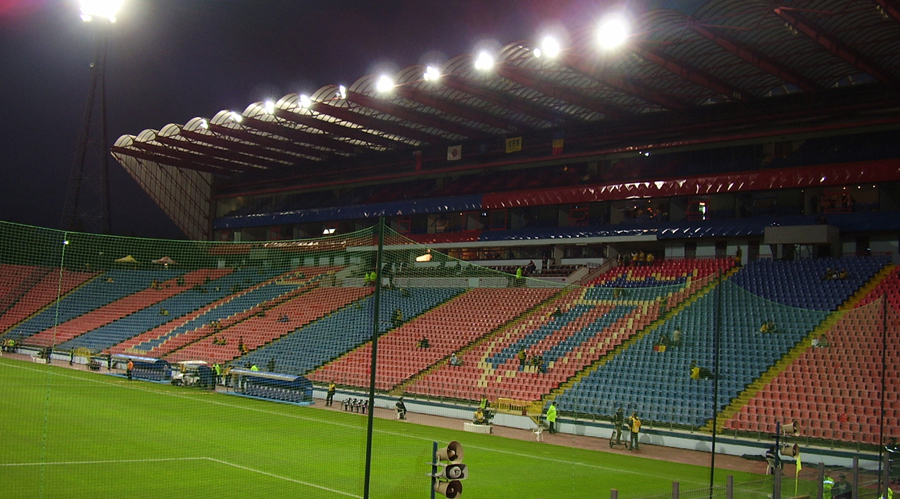
In 1996, the stadium went through a new stage of modernization, the facilities under the second stand were upgraded to the level of a four-star hotel, and the utilities being brought up to the standards of those times. In 2006, the last intervention takes place, on which occasion the arena is brought up to UEFA standards for hosting matches in European competitions. A new electronic scoreboard was used from 7th of April 2007. All the improvements, however, seemed to only delay the inevitable, with the stadium offering less and less comfort to the public and very often having problems with the drainage system.
For 41 years, however, this stadium witnessed performances that entered in the history book of theRomanian football and, not by chance, it came to be called the "Temple of Romanian football".
Here are some of the highlights:
- 9th of April 1974 - the inaugural match: Steaua – OFK Belgrade 2-2
- 28th of April 1974 – the first official match: Steaua – Steagu Roşu Braşov 2-2
- 9th of May 1974 – the first win in Ghencea: Steaua – Poli Timişoara 2-0
- 10th of November 1974 – the first defeat: Steaua – Sportul Studenţesc 2-3 – first defeat: Steaua – Student Sport 2-3
- 29th of September 1976 – the first European match: Steaua – FC Bruges 1-1
- 3rd of October 1979 – the biggest win in the European Cups: Steaua – Young Boys Bern 6-0
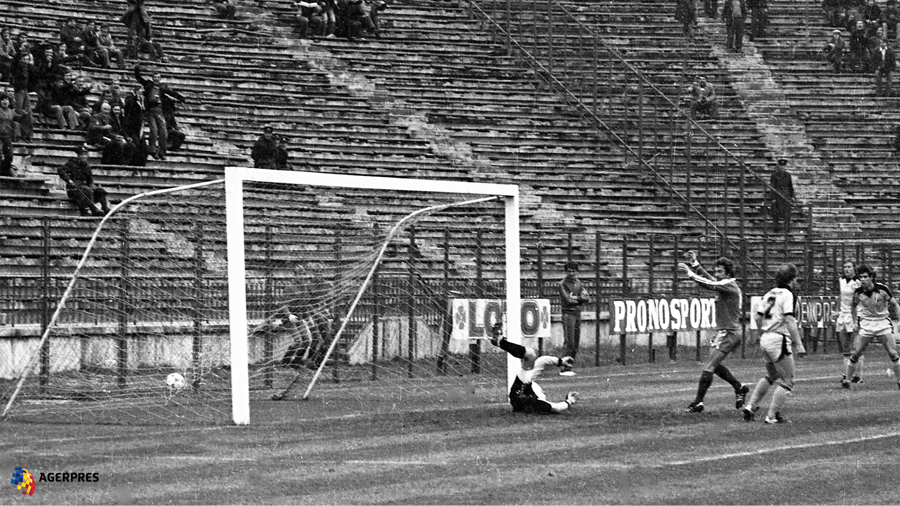
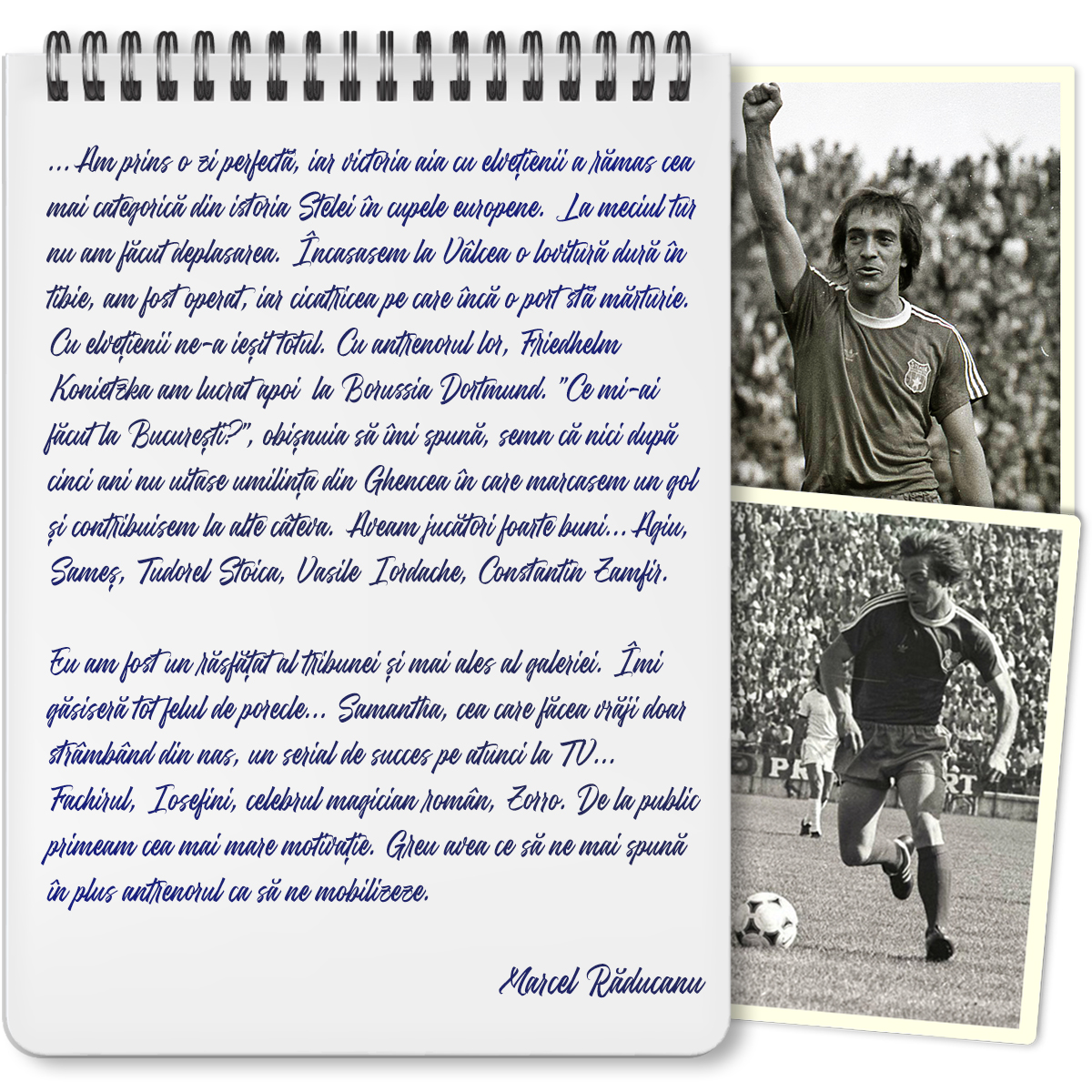
- 5th of June 1982 – Lăcătuș's first appearance in Ghencea, for Braşov, Steaua – FC Brașov 2-1
- 6th of November 1982 – Hagi, the first goal in League 1 - for Constanţa: Steaua – FC Constanța 1-1
- 3rd of September 1983 - Lăcătuș's debut for Steaua (hat-trick): Steaua - ASA Tg Mureș 5-0
- 16th of April 1986 – Steaua's most important win in Ghencea: European Cup semifinal, Steaua – Anderlecht 3-0


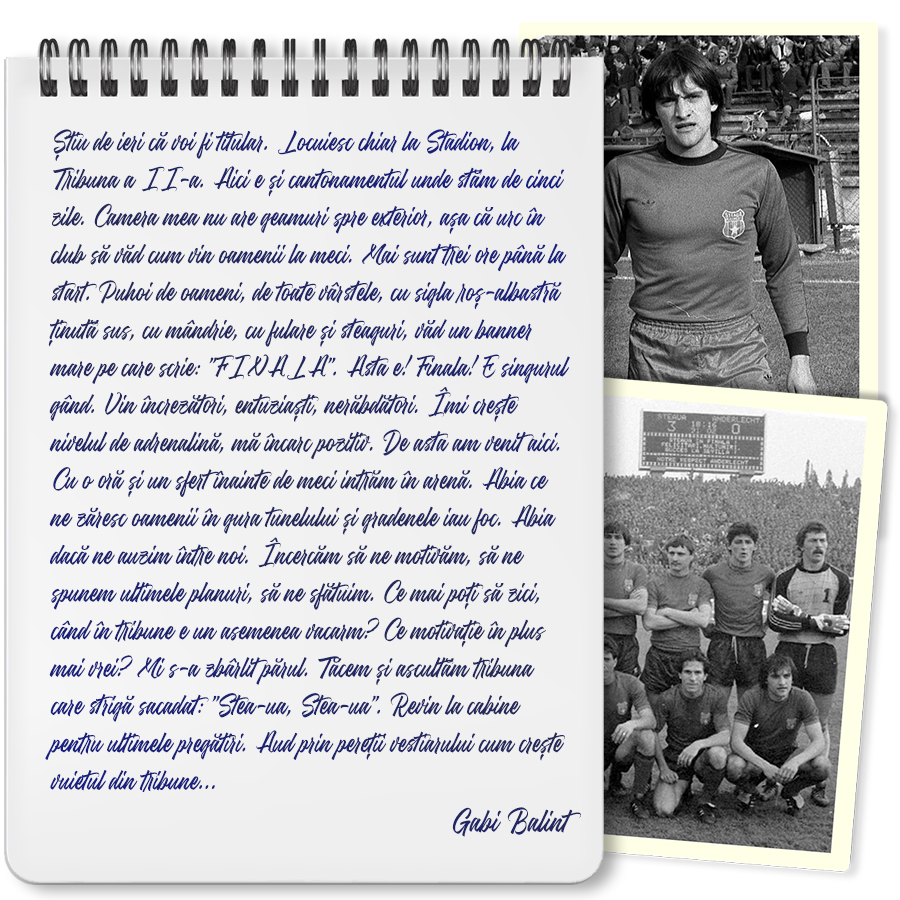
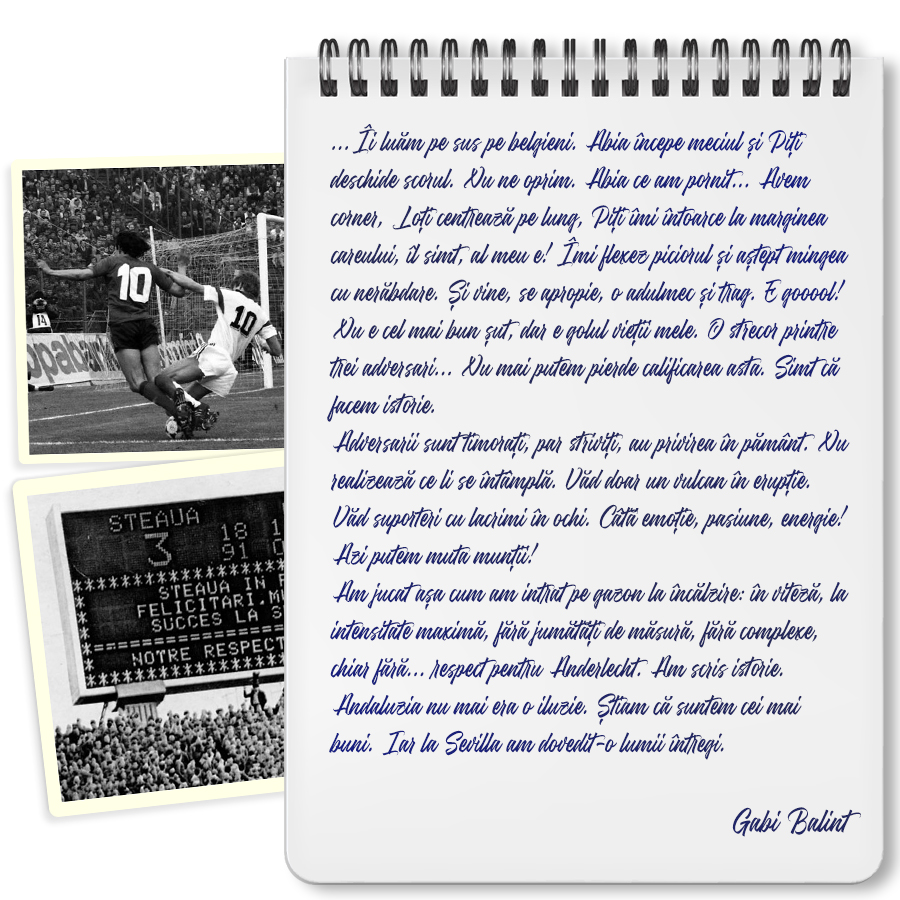

- 18th of May 1986 – at the first home match as European Champions (vs. Victoria 4-0), Steaua was greeted not only by a sold out stadium, but also by a unique arrangement, imprinted right on the grass.

- 6th of April 1988 – the second European Cup semifinal: Steaua – Benfica 0-0
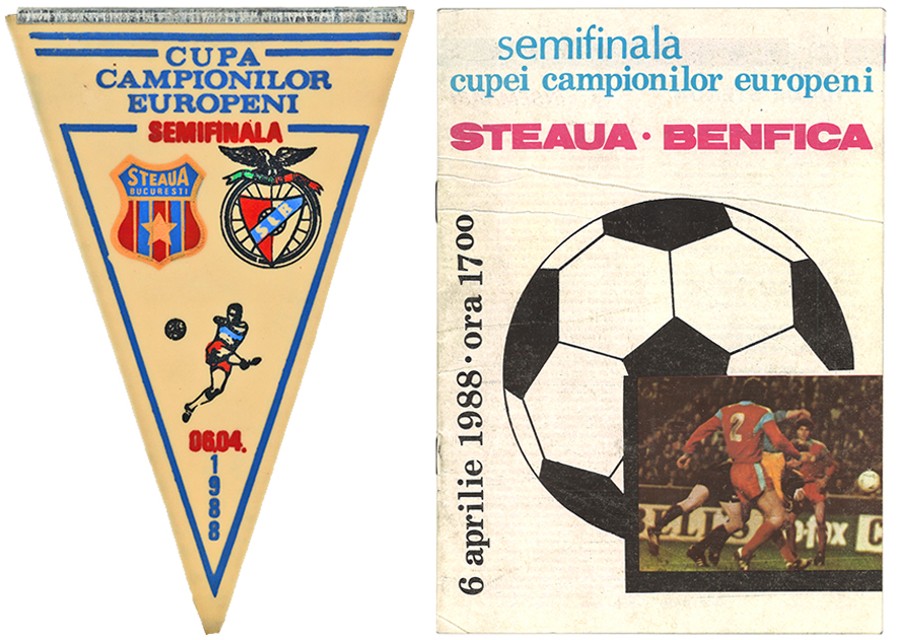
- 7h of December 1988 – the biggest win in the domestic championship: Steaua – Corvinul 11-0
- 15th of March 15 1989 – the first hat-trick in the European Cups (Lăcătus): Steaua – IFK Goteborg 5-1

- 5th of April 1989 – another qualification in an European Cup final: Steaua – Galatasaray 4-0

- 6th of May 6 1990 - Hagi's last match and last goal in Romania’s First Division: Steaua – Corvinul 4-0
- 1st of September 1 1991 – the first match played at night, inaugurating the floodlights: Steaua – Brăila 2-0
- 13th of September 13 1995 – the first home win in the UCL, the new European Cup format: Steaua – Rangers 1-0, Didi Prodan goal

- 4th of April 4 1998 – the biggest goal difference in a domestic derby: Steaua – Dinamo 5-0
The Romanian National Football Team played the first of a long series of memorable matches in Ghencea on 23 rd of March 1977, when the Tricolors beat Turkey 4-0 in a Balkan Cup match, and 3 of the scorers were Steaua’s players: Liță Dumitru, Iosif Vigu and Anghel Jordanescu. Three weeks later Romania defeated Spain in the preliminaries for the 1978 World Cup, in the first official match played in Ghencea.
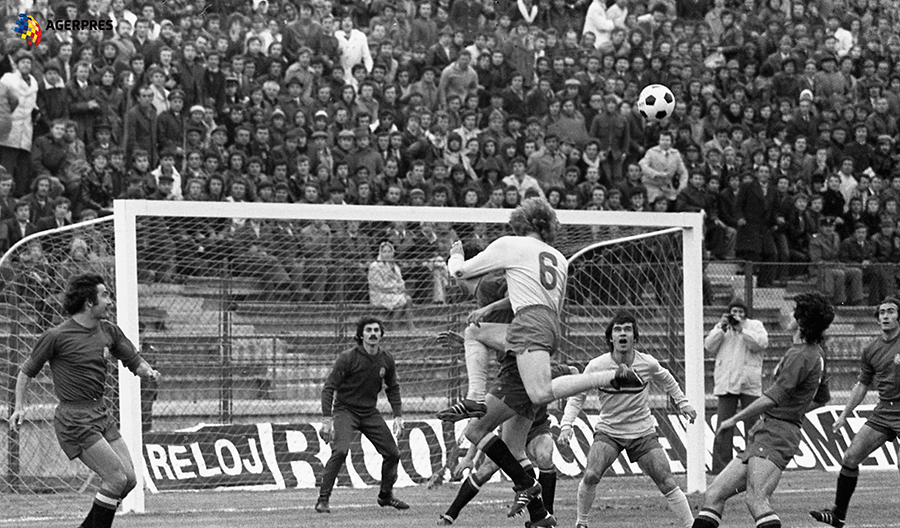
For 32 years, the Romanian National Football Team achieved memorable victories on the Steaua Stadium that would take them to three World Championship final tournaments (1990, 1994 and 1998) and two European Championships (1996, 2000).

Prunea, Gică Popescu, Prodan, Belodedici, Răducioiu, Dan Petrescu, Hagi, Dorinel Munteanu, Sabău, Lupescu, Ilie Dumitrescu – the first 11 of the team that beat Belgium 2-1 on the way to the 1994 US WC
The golden period of the national team will always be linked to this place. Here, Romania defeated Spain, Denmark, Belgium, Wales, Ireland, and those present in the stands had the chance to see live world class players, from Zidane, Schmeichel, Deschamps, Zubizarreta, to Butragueno, Scifo, the Laudrup brothers, Figo, Ian Rush, Maldini or Del Piero.
Iată câteva dintre bornele naționalei pe Stadionul Steaua:
- 23rd of March 1977 – Romania's first match in Ghencea: Romania – Turkey 4-0
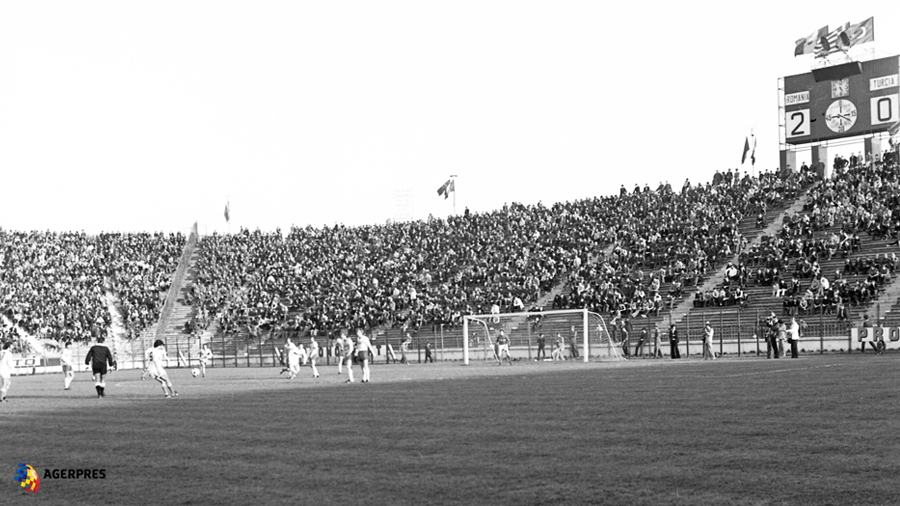
- 10th of September 1986 - the return of the national team to Ghencea: Romania - Austria 4-0
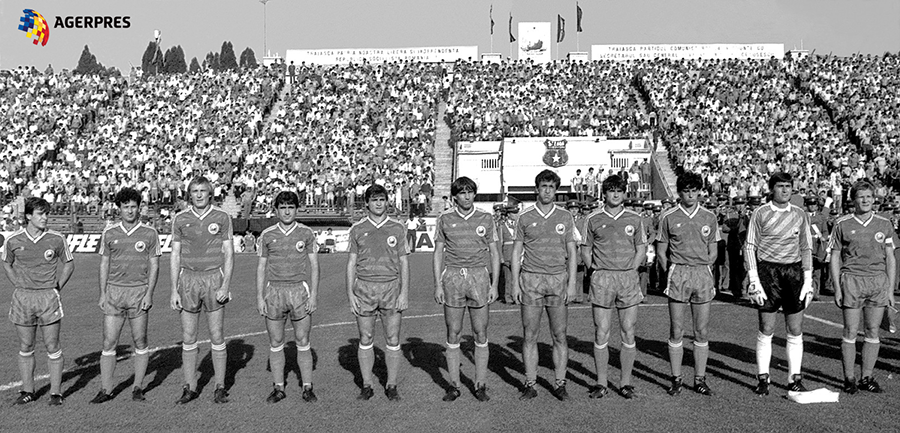
- 15th of November 1989 - World Cup final tournament qualification after 20 years: Romania - Denmark 3-1
- 20th of May 1992 - Probably the best half in the history of the national team
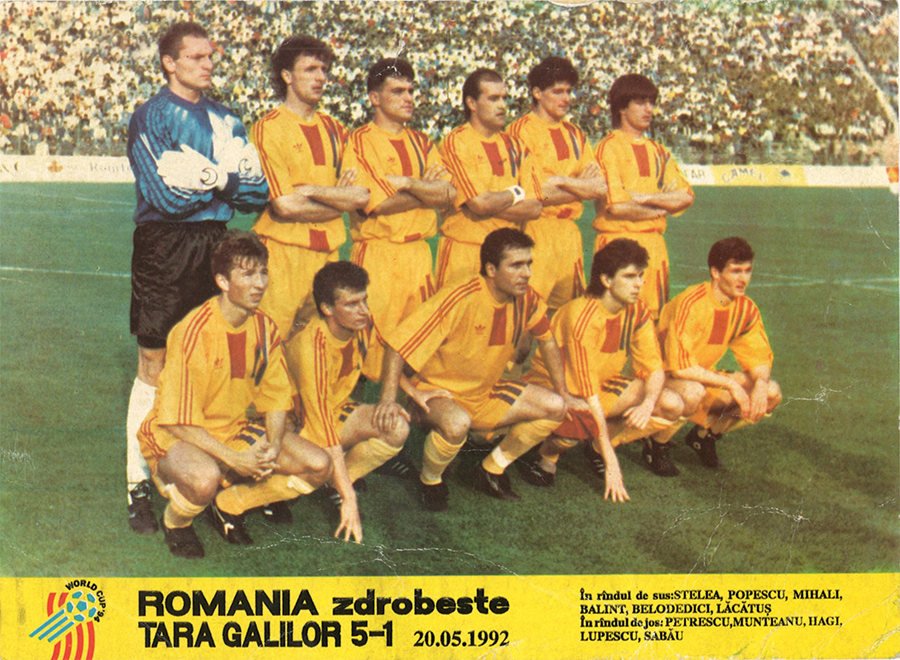
- 29th of March 1997 - Gică Popescu, 4 goals in a match for the national team: Romania - Liechtenstein 8-0
- 23rd – 31st of May 1998 – Steaua Stadium hosted several matches for -the European U21 Football Championship, including the final between Spain and Greece, score 1-0.
- 5th of June 1999 – Hagi returns to the national team: Romania – Hungary 2-0

- 8th of September 1999 - Hagi's last goal for the national team: Romania - Portugal 1-1
- 9th of September 2009 – the last match of the national team on the old Steaua Stadium: Romania – Austria 1-1
After four decades full of memorable moments, with unique sporting performances, huge emotions and countless joys, 3 years after the last official match (22nd of March 2015), in August 2018, the old Steaua Stadium was demolished.
Present times

Steaua Stadium was rebuilt as part of the Romanian Government's commitment to UEFA for the city of Bucharest to host 4 matches in the final tournament of the 2020 European Football Championship. During the competition, the new stadiums, including this one, were used as bases for training by the teams that played in Bucharest (North Macedonia, Ukraine, Austria and Switzerland).
The stadium was built on the site of the old arena, but was brought 20 meters closer to Ghencea Boulevard. For the design and implementation of the construction, the National Investment Company selected an association of 3 Romanian companies, with Construcţii Erbaşu S.A. as the general contractor, together with Concelex and Terragaz Construct. The design team was formed by Graphic Studio (architecture), Popp si Asociații (structural frames) and MC General Construct (electromechanical installations), respectively Construcţii Erbașu and Popp si Asociații (general designer).
The new project wanted to be a modern, multi-purpose construction, which would offer the athletes exceptional conditions for performance, but also a quality experience for the audience. The result is a multifunctional complex with more than 800 rooms, spread over a built-up area of 82,000 m² that met the highest standards in the field in 2021, when the work was completed.
The duration of the construction was 818 days, from the start of the demolition of the old arena until the day of reception of the new one (2 years, 2 months and 26 days). For comparison, the National Arena was ready in 3 years, 8 months and 19 days.
- 27th of November 2020 – construction is completed and the testing and reception phase begins
- 4th of June 2021 – the stadium is transferred in the custody of Clubul Sportiv al Armatei “Steaua”
- 8th of June 8 2021 – the first training of a football team on the new stadium pitch (North Macedonia)
The inauguration of the new stadium took place on 7th of July 2021 on the occasion of a friendly match played in the company of the same opponent as in 1974, OFK Belgrade. This time the score was no longer equal, Steaua categorically winning 6-0 in front of 15,000 fans. Despite the great interest, due to the restrictions imposed by the coronavirus pandemic regulations, only half of the possible number of tickets could be put on sale.
On the same day, Steaua marked the 35th anniversary of the victory in Seville in the presence of the heroes of that time and retired the number 7 shirt worn by its legend, Marius Lăcătuș, as a tribute to his entire career.
The football field has standard size, with a length of 105 m and a width of 68 m. The playing surface is covered with natural grass reinforced with synthetic fibers and allows the organization of football and rugby matches. Below this there is a complex installation that includes high-performance irrigation, drainage, de-icing and heating systems for the winter season.
The arena has 4 ultra-modern changing rooms, relaxation areas for athletes, medical treatment area, anti-doping testing area, conference room, several multifunctional rooms, offices area.
Under the stands there are 8 training rooms for different sports (table tennis, boxing, judo, wrestling, weightlifting, shooting, fitness and strength room), a hotel with 24 double rooms and the new headquarters of Steaua TV.
Under the roof, an ambient lighting system is installed, similar to the one found on the stadiums of the Juventus, Atletico Madrid or Chelsea teams, which allows the creation of choreographies of lighting synchronized to music. A display is mounted on the facade of the arena that allows the playback of large text messages.
Due to the construction standards, the facilities offered for the matches, for recovery, accommodation and operation, the Steaua Stadium was classified in August 2021, following an UEFA inspection, in Category 4 - Elite, the highest awarded by the European forum.
As part of the Bucharest Architecture Annual 2021the 19th edition, the Steaua Stadium project received the distinction "Architecture and public investments", in the Built Architecture / Public Architecture section..
Facilities
![]()
- Hybrid grass (natural, reinforced with synthetic fiber), equipped with de-icing, drainage, irrigation and heating systems
- 4 changing rooms for athletes, 4 changing rooms for coaches, 2 changing rooms for referees, 2 warm-up rooms, 1 office for the match delegate
- 300 seats for people with disabilities
- 2678 VIP seats
- 150 seats for the media
- 40 boxes (472 seats)
- Hotel with 24 double rooms
- 574 parking spaces
- Sky Bar
- 2 Restaurants
- 980 square meters of commercial space, 2 shops and 28 public food kiosks
- "Steaua" Army Sports Club Museum with an area of 1300 square meters2
- 135-seat press conference room
- 822 delimited spaces
- Meeting rooms, multimedia rooms
- Audio system with 54 speakers
- DMX light system
- LED projectors that allow UHD 4K transmissions, with a lifespan of 60,000 hours
- 8 training rooms (table tennis, boxing, judo, wrestling, weightlifting, shooting, fitness room)
- Strength and recovery room
Additional information about the arena can also be obtained from the websites of the companies that contributed to the construction of the stadium:
Media
![]()
Justifiably, the rebuilding of the Steaua Stadium generated great public interest. Here are some of the most relevant articles regarding the construction of the new arena. [Read more]
Future

The Steaua Stadium can become equally attractive on any day of the week, for all those that enter its premises, regardless of whether they do it for a sporting event or not.
We want this complex to become a natural, regular host for some of the community's most cherished events. Steaua Stadium must not remain an exclusive space for sporting excitement, but can add to it all the joy and fulfillment of social events that unite the community in the vicinity of the arena.
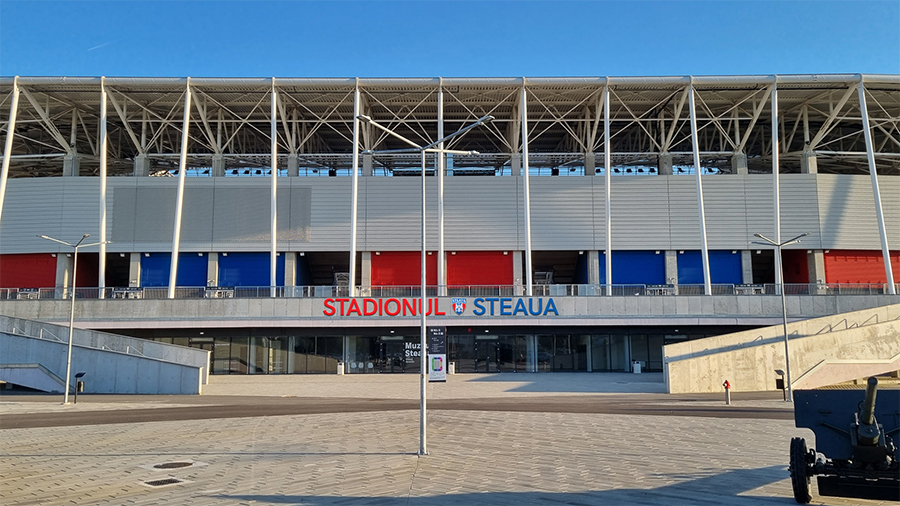
The diversity of existing spaces gives event organizers the opportunity to consider this location for extra-sport events of the most varied kind. The multiple options, the way the spaces are interconnected, the facilities already installed make the Steaua Stadium one of the most complex constructions that can host socio-cultural events.
We invite you to write together the next pages of this arena’s history.































